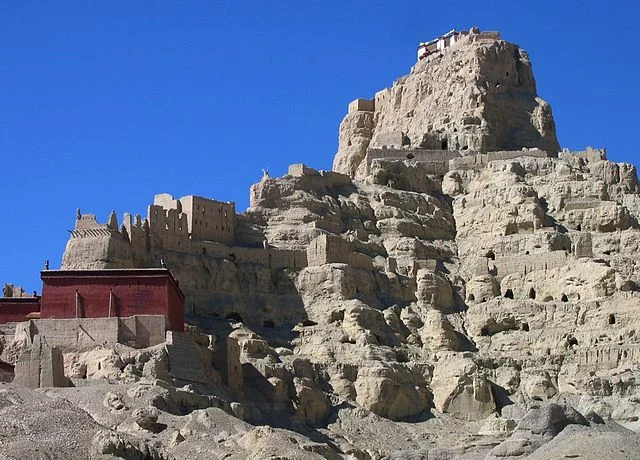Tsaparang: An Overview of the Lost Himalayan City
Tsaparang is a historic site located in the West Tibet Autonomous Region of China, once the flourishing capital of the Kingdom of Guge during the 10th to the 17th centuries AD. Situated in the Upper Sutlej valley, this ancient city reveals the architectural prowess and cultural significance of a bygone Tibetan civilization.
Get your dose of History via Email
Geographical Setting and Historical Context
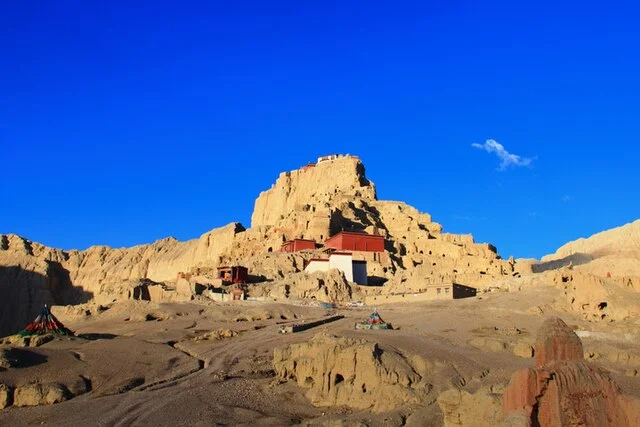
Tsaparang lies in the midst of a lunar-like desert landscape, on the banks of the Langchen Tsangpo river, which is also known as the Sutlej river. The location might have been strategically chosen for its high altitude, providing a natural fortress setting for defense, coupled with the agricultural potential offered by the river’s proximity.
The Guge Kingdom, with Tsaparang at its political and cultural center, was once a hub of wealth and trade, as well as a beacon for the spread of Buddhism across the Himalayan region. The architectural landscape of Tsaparang, with temples, chapels, and fortresses, speaks to the city’s past significance.
Archaeological Significance and Artistry
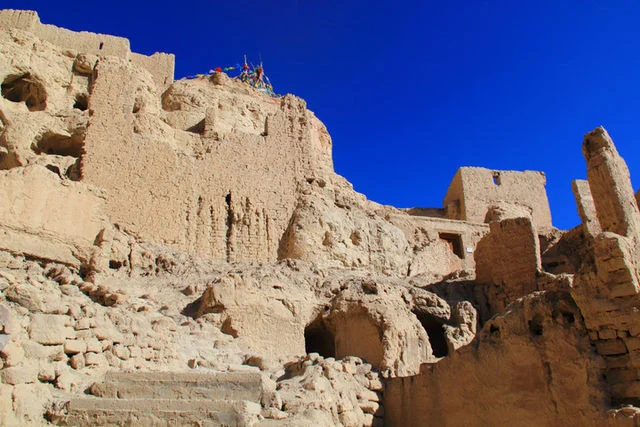
The remains of Tsaparang provide a window into the peak of the Guge kingdom’s power. Artifacts and architectural structures offer evidence of the mastery of Guge artisans, particularly in fresco painting and sculpture. The ancient murals, with their vibrant colors and intricate detail, depict various Buddhist iconographies and myths, illustrating the spiritual devotion and artistic sophistication of the people of Guge.
The layout of Tsaparang was both functionally and symbolically organized. Tucked within the complex are the ruins of the king’s palace, monastic quarters, administrative offices, and chapels, all reflecting the city’s integration of civic, religious, and royal life.
Religious and Cultural Heritage

The Kingdom of Guge was pivotal in the revival of Buddhism in Tibet after the Era of Fragmentation and the collapse of the Tibetan Empire in the 9th century AD. Through the patronage of the Guge kings, significant translation and commentary of Buddhist texts were developed, thus precipitating the re-emergence of Buddhism as a dominant religious force in the region. Tsaparang is particularly noted for its connection to the famous Buddhist monk, translator, and teacher Atisha, who was influenced by the religious environment of the Guge Kingdom during his time in Tibet from 1042 to 1054.
Decline and Rediscovery
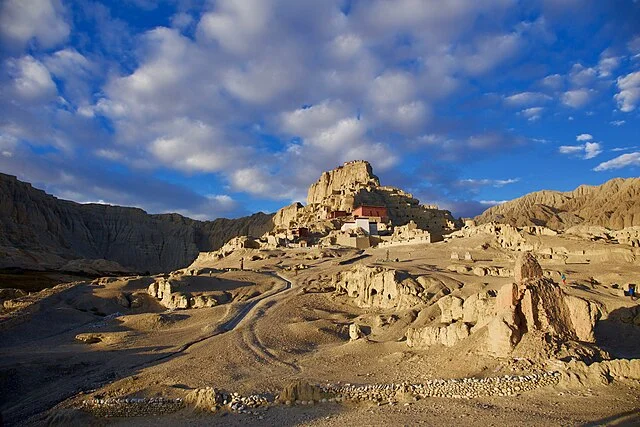
The decline of Tsaparang began in the 17th century AD, marked by the invasion led by the Ladakhi king, Senge Namgyal. The resulting destruction led to the abandonment of the once majestic city. It wasn’t until the early 20th century that Tsaparang would be brought back to the attention of the outside world. This rediscovery can be credited to explorers such as Italian Tibetologist Giuseppe Tucci, who visited the site in 1935 and provided detailed descriptions and scholarly insight into the remnants of the Guge Kingdom.
Challenges to Preservation
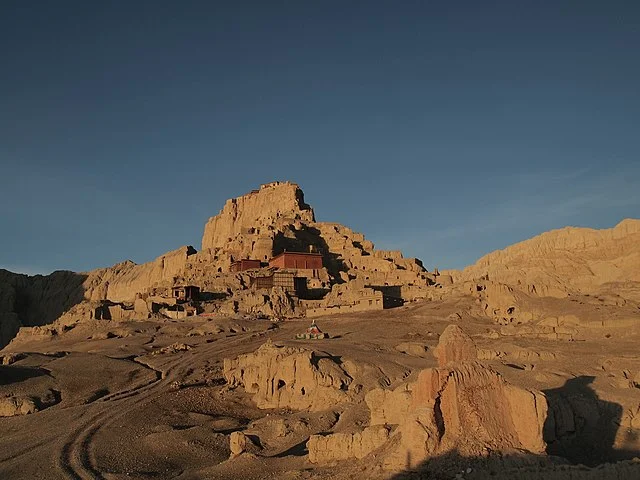
Despite its profound historical and cultural importance, Tsaparang faces serious preservation challenges. Harsh natural elements, occasional seismic activity, and a lack of maintenance have created a perilous situation for the remaining structure. The site requires urgent and skilled preservation efforts to protect its archaeological integrity and cultural heritage for future generations to appreciate and study.
Conclusion
Tsaparang’s significance extends beyond its role as the capital of Guge; it is an icon of the resilience of cultural beliefs and artistic expressions in the face of geographical isolation and political turmoil. For historians, archaeologists, and those with a keen interest in Tibetan culture, Tsaparang offers an invaluable and evocative glimpse into the height of Himalayan glory. Perhaps, with appropriate conservation measures, the ruins of Tsaparang can continue to offer insights into a civilization that once thrived on the roof of the world.

